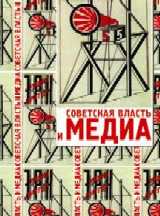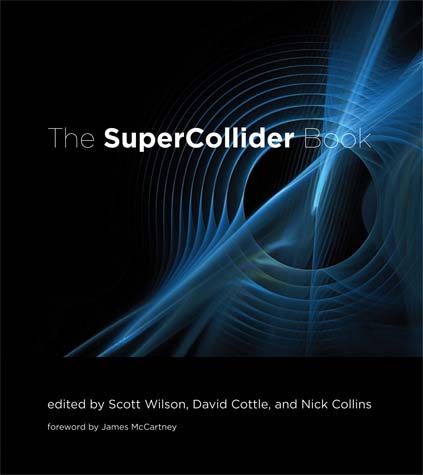Hans Günther, Sabine Hänsgen (eds.): Soviet Power and the Media (2006) [Russian]
Filed under book | Tags: · 1920s, 1930s, cinema, communism, film, media, media theory, photography, politics, print, radio, socialist realism, sound, soviet union, technology, theatre

Proceedings from the conference “The Political as Communicative Space in History” (Bielefeld, October 2003) devoted to the comparative analysis of the media in the Soviet Union of the 1920s and 1930s provide a pioneering media-theoretical exploration of the role of radio, film, photography and print in the engineering of the communist Soviet power.
Sovetskaya vlast’ i media [Советская власть и медиа]
Publisher Akademicheskiy proekt, St. Petersburg, 2006
Open Access
ISBN 5733103353, 9785733103358
621 pages
Reviews: Wolfgang Schlott (Die Welt der Slaven, 2007, DE, PDF), Alexander Prokhorov (Studies in Russian and Soviet Cinema, 2007), Alexander Ulanov (Novoe literaturnoe obozrenie, 2007, RU), Jana Klenhova (ArtMargins, 2008), Yuliya Liderman (Usloviya teatra, RU, 2010).
PDF (broken link fixed on 2014-1-28)
PDFs
Scott Wilson, David Cottle, Nick Collins (eds.): The SuperCollider Book (2011)
Filed under book | Tags: · code, computer music, microsound, music, programming, software, sonification, sound, sound art, sound synthesis

“SuperCollider is one of the most important domain-specific audio programming languages, with potential applications that include real-time interaction, installations, electroacoustic pieces, generative music, and audiovisuals. The SuperCollider Book is the essential reference to this powerful and flexible language, offering students and professionals a collection of tutorials, essays, and projects. With contributions from top academics, artists, and technologists that cover topics at levels from the introductory to the specialized, it will be a valuable sourcebook both for beginners and for advanced users.
SuperCollider, first developed by James McCartney, is an accessible blend of Smalltalk, C, and further ideas from a number of programming languages. Free, open-source, cross-platform, and with a diverse and supportive developer community, it is often the first programming language sound artists and computer musicians learn. The SuperCollider Book is the long-awaited guide to the design, syntax, and use of the SuperCollider language. The first chapters offer an introduction to the basics, including a friendly tutorial for absolute beginners, providing the reader with skills that can serve as a foundation for further learning. Later chapters cover more advanced topics and particular topics in computer music, including programming, sonification, spatialization, microsound, GUIs, machine listening, alternative tunings, and non-real-time synthesis; practical applications and philosophical insigh”s from the composer’s and artist’s perspectives; and “under the hood,” developer’s-eye views of SuperCollider’s inner workings. A Web site accompanying the book offers code, links to the application itself and its source code, and a variety of third-party extras, extensions, libraries, and examples.”
Foreword by James McCartney
Publisher MIT Press, 2011
ISBN 0262232693, 9780262232692
756 pages
Review: Dave Phillips (Linux Journal).
PDF (removed on 2014-2-4 upon request of the publisher)
Code (ZIP)
Book resources (code, video examples)
Book errata
Jean-François Augoyard, Henry Torgue (eds.): Sonic Experience: A Guide to Everyday Sounds (1995/2006)
Filed under book | Tags: · acoustics, city, everyday, listening, music, psychology, sound

“Never before has the everyday soundtrack of urban space been so cacophonous. Since the 1970s, sound researchers have attempted to classify noise, music, and everyday sounds using concepts such as Pierre Schaeffer’s sound object and R. Murray Schafer’s soundscape. Recently, the most significant team of soundscape researchers in the world has been concerned with the effects of sounds on listeners.
In a multidisciplinary work spanning musicology, electro-acoustic composition, architecture, urban studies, communication, phenomenology, social theory, physics, and psychology, Jean-François Augoyard, Henry Torgue, and their associates at the Centre for Research on Sonic Space and the Urban Environment (CRESSON) in Grenoble, France, provide an alphabetical sourcebook of eighty sonic/auditory effects. Their accounts of sonic effects such as echo, anticipation, vibrato, and wha-wha integrate information about the objective physical spaces in which sounds occur with cultural contexts and individual auditory experience. Sonic Experience attempts to rehabilitate general acoustic awareness, combining accessible definitions and literary examples with more in-depth technical information for specialists.”
First published À l’écoute de l’environnement: Repertoire des effets sonores, Editions Parenthèses, 1995
English edition
With a Foreword by R. Murray Schafer
Translated by Andra McCartney and David Paquette
Publisher McGill-Queen’s University Press, 2006
ISBN 0773576916, 9780773576919
230 pages
Review: Kate Galloway (U Toronto Quarterly, 2007).
Comment (1)
